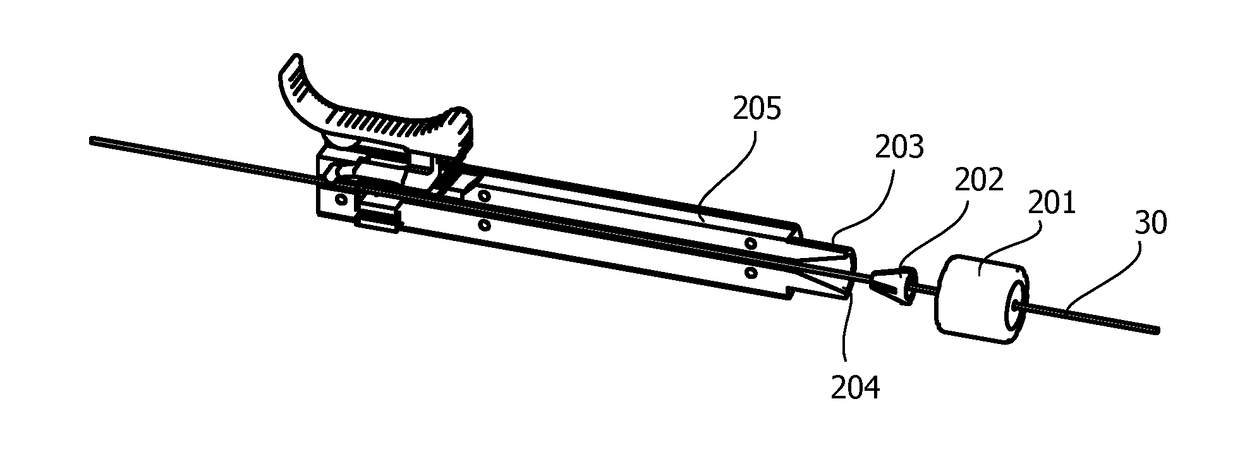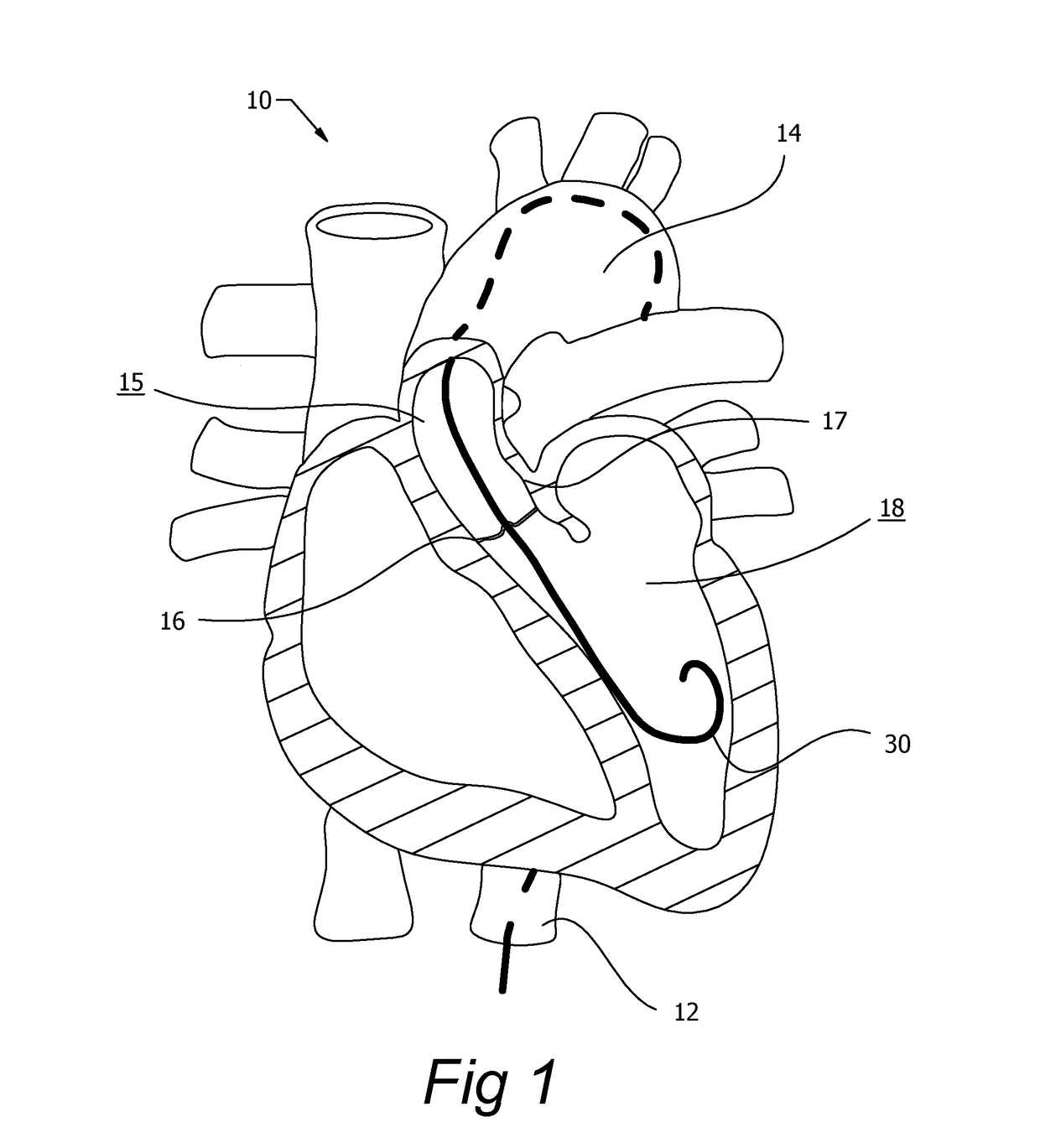Catheter guide wire control device
a control device and catheter technology, applied in the field of catheter guide wire control devices, can solve the problems of limiting the accuracy of catheter delivery, stent malposition, and transcatheter valve replacement, and achieve the effects of reducing surgeon fatigue, improving positioning accuracy of catheter delivery medical devices, and optimizing translational resolution and overall movemen
- Summary
- Abstract
- Description
- Claims
- Application Information
AI Technical Summary
Benefits of technology
Problems solved by technology
Method used
Image
Examples
Embodiment Construction
[0041]Many of the fastening, connection, wiring, control, manufacturing and other means and components utilized in this invention are widely known and used in the field of the invention, and their exact nature or type is not necessary for a person of ordinary skill in the art or science to understand the invention; therefore they will not be discussed in detail. Furthermore, the various components shown or described herein for any specific application of this invention can be varied or altered and anticipated by this invention and the practice of a specific application or embodiment of any element may already be widely known or used in the art, or persons skilled in the art or science; therefore, each will not be discussed in significant detail.
[0042]The present invention, as described, is used to control guide wires during medical procedures. Guide wires can be used to navigate tortuous pathways, can be used in advance of a delivery catheter, or used in conjunction with a delivery ...
PUM
 Login to View More
Login to View More Abstract
Description
Claims
Application Information
 Login to View More
Login to View More - R&D
- Intellectual Property
- Life Sciences
- Materials
- Tech Scout
- Unparalleled Data Quality
- Higher Quality Content
- 60% Fewer Hallucinations
Browse by: Latest US Patents, China's latest patents, Technical Efficacy Thesaurus, Application Domain, Technology Topic, Popular Technical Reports.
© 2025 PatSnap. All rights reserved.Legal|Privacy policy|Modern Slavery Act Transparency Statement|Sitemap|About US| Contact US: help@patsnap.com



